An effective trimming process is essential for the success of any cannabis cultivator. Good trimming is crucial to reduce the risk of mold and mildew, increase potency, and enhance the overall appearance of your product. The challenge is in choosing the right trimming method.
Every grower has their own opinion on which trimming strategy is best. The age-old “machine trimming versus hand trimming” debate leads to some lively conversation, but the universal aspect—regardless of automation preference—is when to trim.
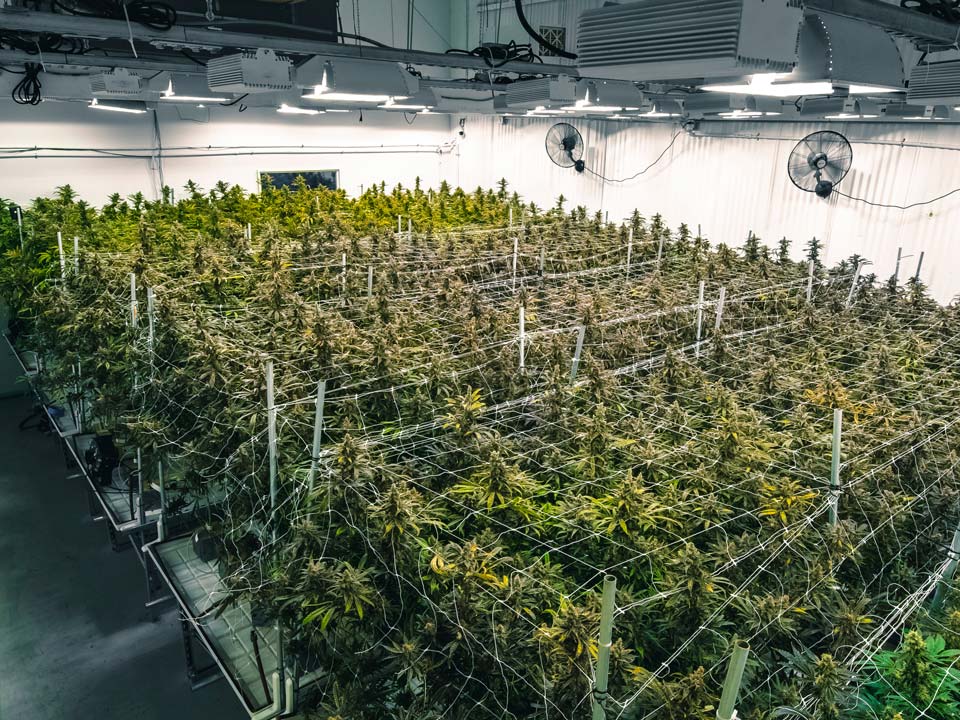
Whether you’re employing machines or human trimmers, the moisture levels of your bud matter on trim day. Dry trimming and wet trimming both have some advantages, and each school of thought can be zealous about using one method over the other.
At Triminator, we understand there are benefits to both strategies. That’s why we offer state-of-the-art dry trimmers, as well as hybrid solutions that support both wet and dry processes. Today, we’re going to provide a behind-the-scenes look at the pros and cons of both options, to help you choose the technique that best suits your operation.
Benefits of Wet Trimming Cannabis
For many cannabis cultivators, wet trimming is the most efficient option. It involves separating cannabis buds from their branches and pruning sugar leaves immediately after harvesting, allowing for a rapid post-production process. Some of the key benefits of wet trimming include:
Speed and Simplicity
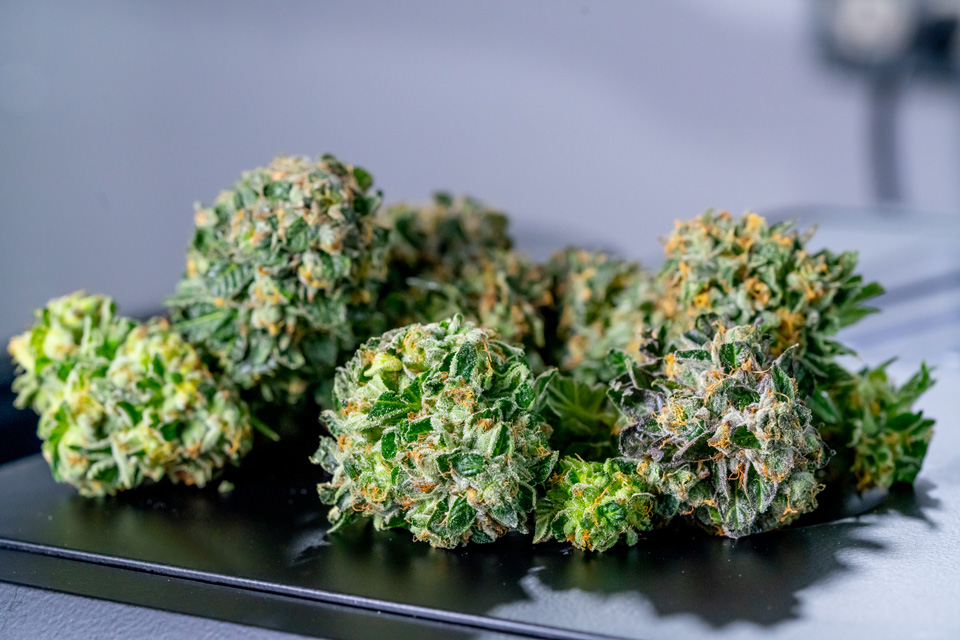
Wet trimming and drying on racks are an efficient combination for cannabis cultivators. With a wet trimming strategy, you can produce a more streamlined workflow, boosting efficiency. Additionally, because it’s easier to remove fan and sugar leaves when they’re wet, the post-harvest process takes less time.
Wet trimming can be particularly beneficial for producers who aren’t bringing their product to market in flower form. You can easily prepare buds for concentrates with minimal effort. Plus, once leaves are removed, buds can dry faster, reducing the risk of mold forming between the stalk and flower.
Trichome Preservation
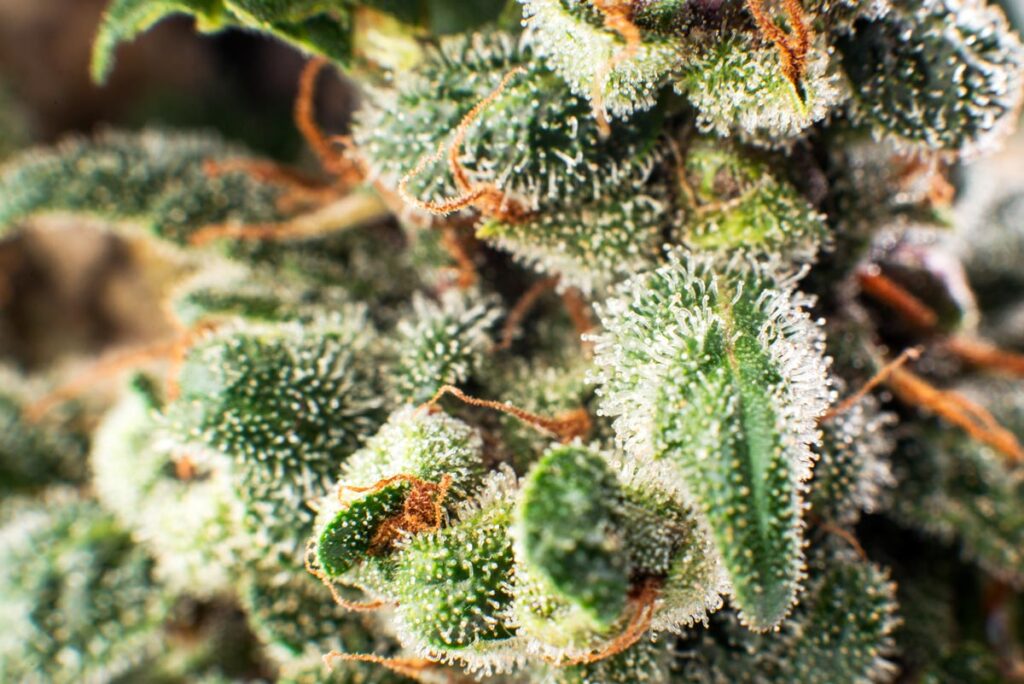
Many growers and cultivators believe wet trimming is easier on the buds, and more effective at preserving trichomes. This is in part thanks to the stickiness of the plant while it’s still wet. Dried trichomes can crumble and detach more easily during trimming, making it harder to preserve the same level of potency and flavor in a finished product.
Of course, industrial, and automated bud trimmers are specifically designed to ensure trichomes are still preserved when dry trimming. This means the difference in potency and flavor can be very minimal regardless of which method you use.
Tighter Trim
As mentioned above, wet trimming is generally a lot easier. It’s much simpler to remove stalks, fan leaves, and sugar leaves when they’re “wet”. During the drying process, these leaves shrivel up and stick closer to the bud, making it harder to get an accurate, neat, and tighter trim.
If you’re looking for exceptional accuracy, wet trimming could be an excellent strategy. This method also allows the buds to “puff up” which can make them more visually attractive after trimming for growers selling the entire flower.
Things to Consider When Wet Trimming Cannabis
While wet trimming is a popular choice for many cannabis growers, it does have potential downsides. The risks you encounter can vary depending on the process and trimming solutions you use. Some things to consider include:
Possibility for Lost Terpenes
Trimming your cannabis buds immediately after bucking may result in lost terpenes. The outer leaves of the plant protect the bud when drying, holding in moisture, and preserving optimal humidity levels. Though this means the drying process takes longer, it also helps to ensure that buds can dry at the correct speed.
When intact plants are allowed to dry naturally, the buds are surrounded by a micro-environment of moist sugar leaves. The buds share moisture and secondary metabolites with the stalks too. A longer drying time also means chlorophyll has more time to fade. Since this substance can give buds a harsher flavor, buds that are dry-trimmed can be more flavor-rich for smoking.
Complexity
With wet trimming, the process must be done immediately after harvest, as quickly as possible, so plants aren’t allowed to dry and deteriorate. Though trimming is simpler and quicker, the scale of your operation may mean an instant trim is more complex and stressful.
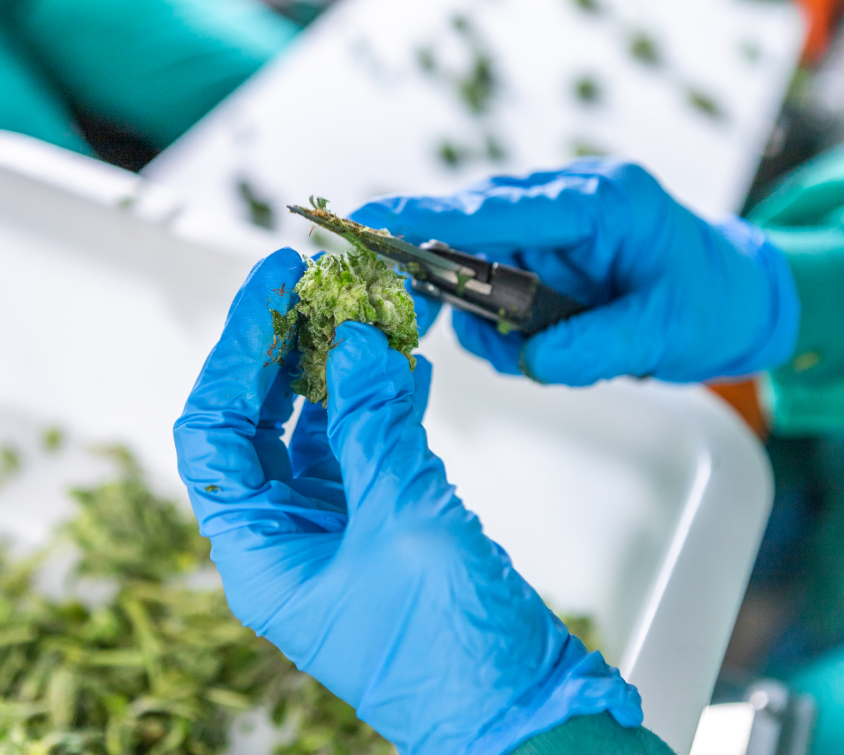
At the same time, wet trimming can be messy. The plants retain more moisture, which means plant material can easily get stuck to shears, machinery, fingers, clothing, and more. This requires cultivators to invest in more regular cleaning throughout the trimming process.
Aesthetics
Although wet trimming can sometimes improve the appearance of the bud for consumers buying full plant products, the aesthetics can vary, depending on your process. Sometimes, the color and appearance of wet-trimmed products can dissuade customers.
However, this is not a problem for companies creating concentrated and distillate products. Wet trimming can give these companies an opportunity to leverage more precision and accuracy in their trim, leading to greater potency for extracts.
Benefits of Dry Trimming Cannabis
With dry trimming, cultivators and growers leave their marijuana flowers to dry and cure before removing any leaves. Only after the product has been dried and cured do you begin to remove the excess leaves. There are a couple of key benefits to this method.
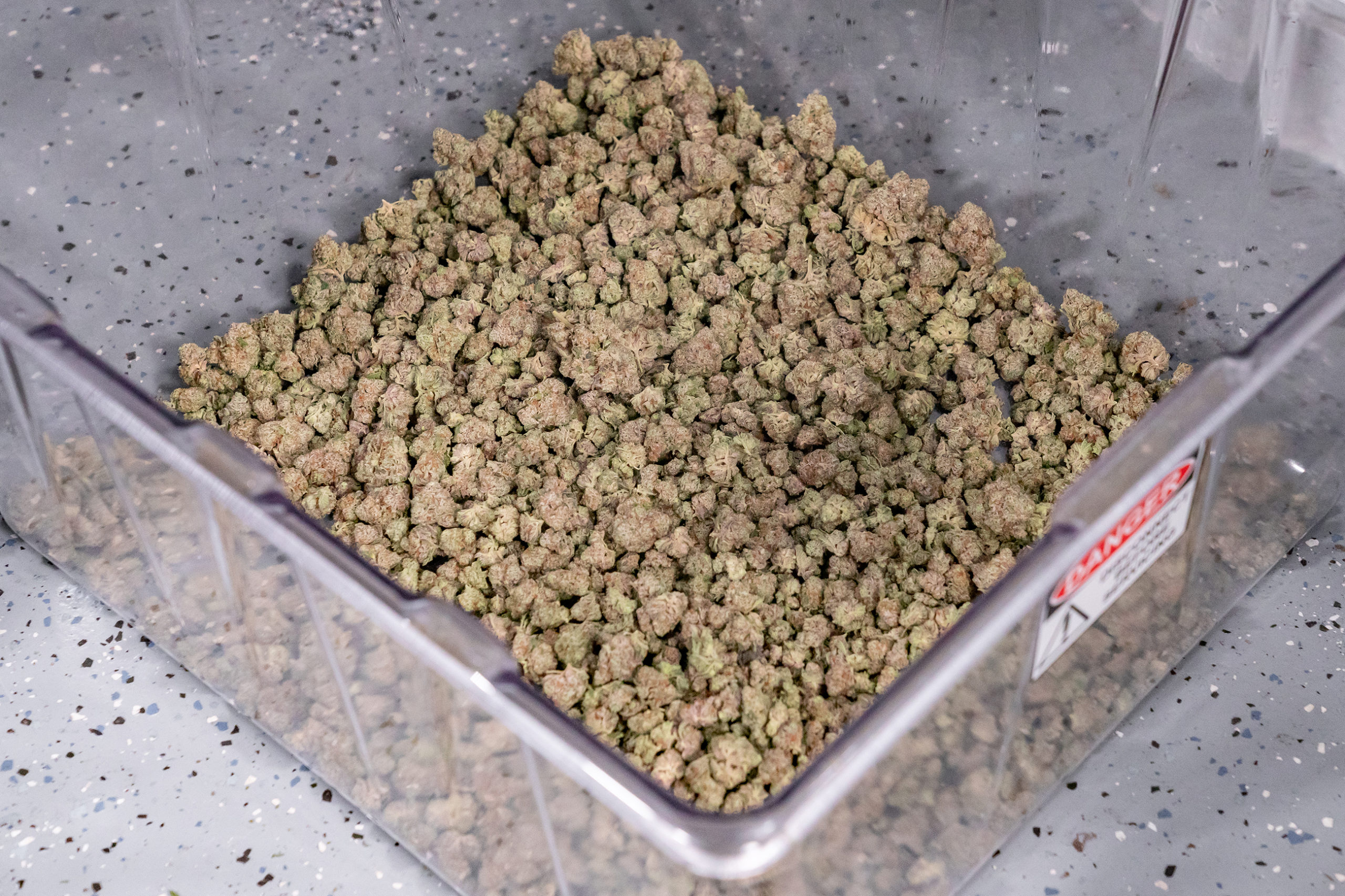
Quality
The biggest advantage of dry trimming cannabis flower for many growers is the potential to preserve exceptional product quality. Because buds are protected by the surrounding leaves during drying, they can dry at an optimal speed. The result is usually denser buds, with more richly developed terpene profiles and trichome coverage, leading to a top-shelf product.
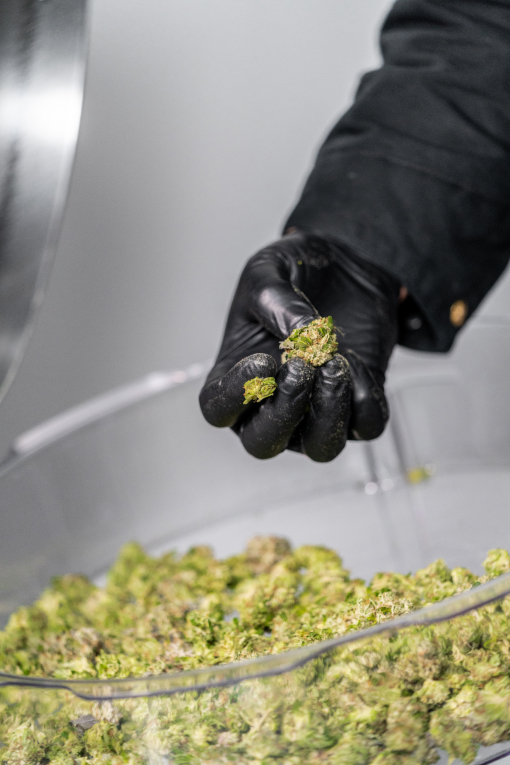
Dry trimming gives growers comprehensive control over drying speeds and allows them to preserve consistent quality in their products. For uncompromising growers targeting customers with high expectations, dry trimming is often a go-to choice.
Simpler Harvesting
While wet trimming leads to a simpler trimming process, dry trimming allows for an easier harvesting day. With wet trimming, buds need to be processed immediately. With dry trimming, they’re left to dry and cure, so you can choose the right time to begin the trimming process.
Additionally, many large-scale commercial growers appreciate the dry trimming method for its cleanliness. Dry trimming involves a lot less sticky resin, which typically increases the need for constant cleaning. Plus, drying entire branches can even optimize the cannabis trim for use in edibles and extracts, increasing production opportunities.
Things to Consider When Dry Trimming Cannabis
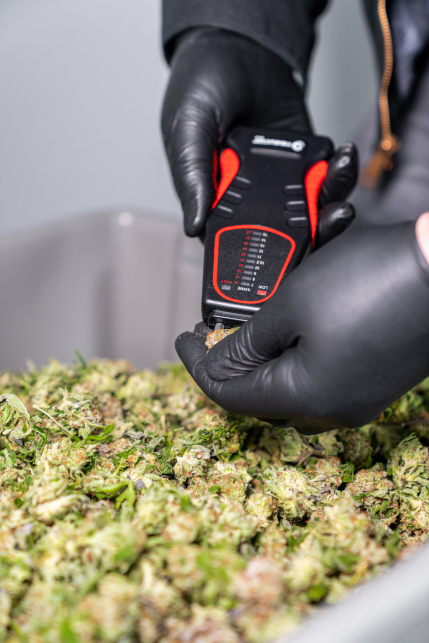
There are numerous benefits to dry trimming cannabis, particularly for growers who don’t want to immediately trim products straight after harvesting. However, there are some potential issues too. Major concerns with dry trimming include:
Timing the Right Trim Day
Waiting to trim cannabis provides more flexibility at harvest, but it does create some scheduling uncertainty. While you can estimate the right time to trim based on your previous harvests, various factors, such as differences in strain or changes to your drying room atmosphere, can affect the length of the drying period.
In general, it’s recommended to dry trim when the bud measures about 9-10% moisture. Knowing when you’ll hit that number is a little tricky, even with a moisture meter.
Not Ideal for Humid Climates
The climate in which you grow and process your cannabis plants can make dry trimming an unsuitable option. In humid climates, plants left to dry before trimming may be more subject to issues with mold and mildew. Often, growers in warmer, coastal climates choose to trim wet to avoid these potential issues.
Unless you’ve got a climate-controlled area with robust dehumidification, drying intact plants will be difficult in humid locations. Drying in a more humid environment is slower—and gentler on bucked buds, which would usually dry more quickly.

Space
Creating an environment where entire plants can dry and cure before trimming requires a lot of space. Rack-drying trimmed buds, on the other hand, creates a level of vertical density that allows you to process more of your harvest, with less space.
If you’re limited in the available space you can access, or you’re processing a particularly large volume of plants, dry trimming may not be an option. Wet trimming could free up some crucial real estate in your processing room.
Wet Trim vs Dry Trim: Choosing the Best Equipment
Understanding the benefits and disadvantages of different trimming methods can help you determine which strategy suits your operation best. There’s no one-size-fits-all strategy. Some cultivators benefit from a dry trimming process, particularly when they’re selling entire flowers, and want to ensure a smoother smoking experience and enhanced taste.
Others may appreciate the simplicity, speed, and convenience of the wet trimming process, particularly if they’re limited in available processing room space. Factors like temperature, humidity, facility space, and strain all play a role in your choice.
In either instance, it’s crucial to ensure you have the right machinery to optimize your trimming strategy. If you’re focusing exclusively on dry trimming, a dedicated dry trimmer will help you retain the quality of your buds and minimize the risk of lost trichomes.
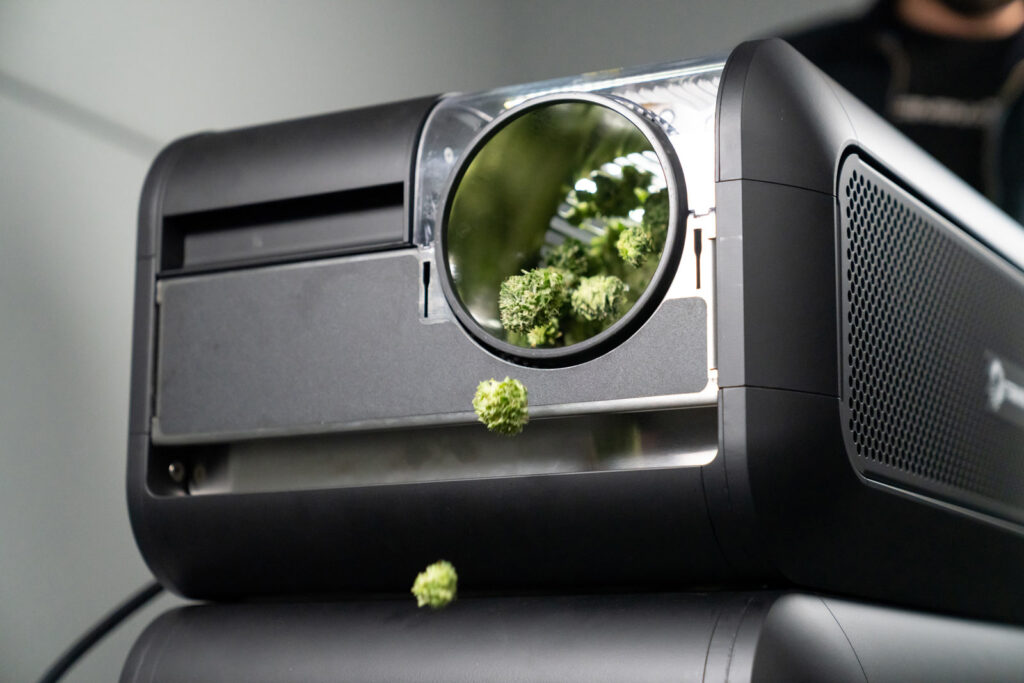
If you want to experiment with different methods, a hybrid trimming machine that can trim both wet and dry flower will give you more versatility. Whatever method you choose, make sure you’re using a quality industrial bud trimmer, designed to support your business.
Reach out to Triminator to learn more about choosing the trimming solution that’s right for you.